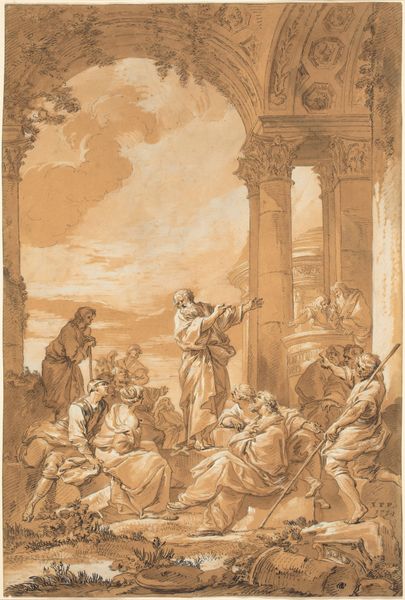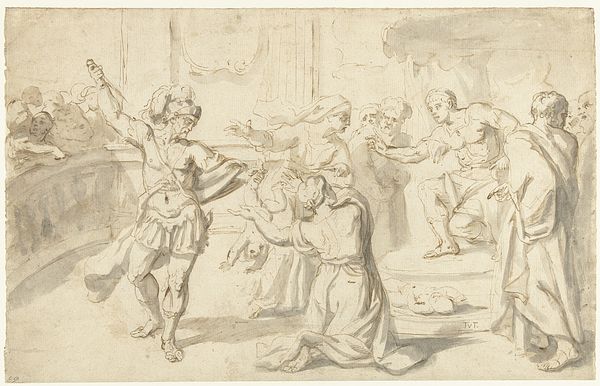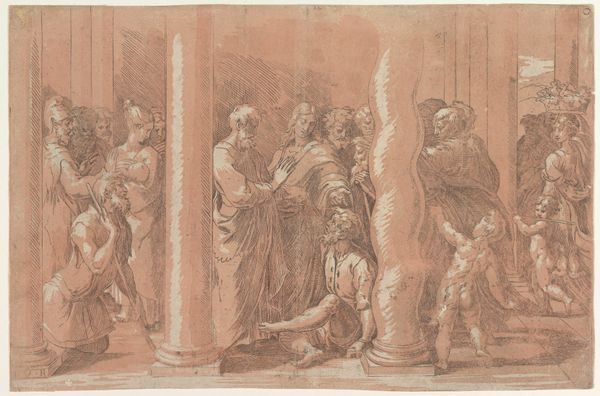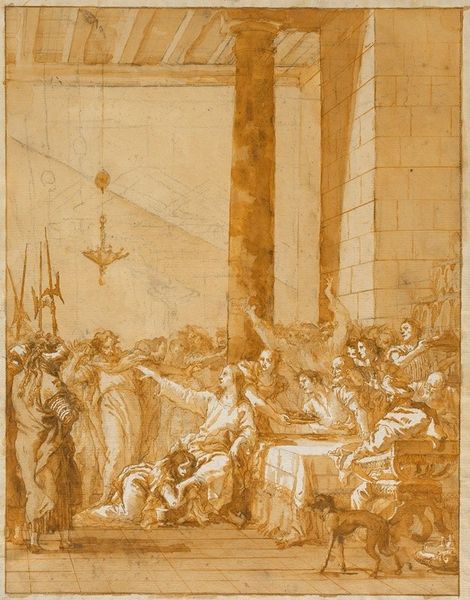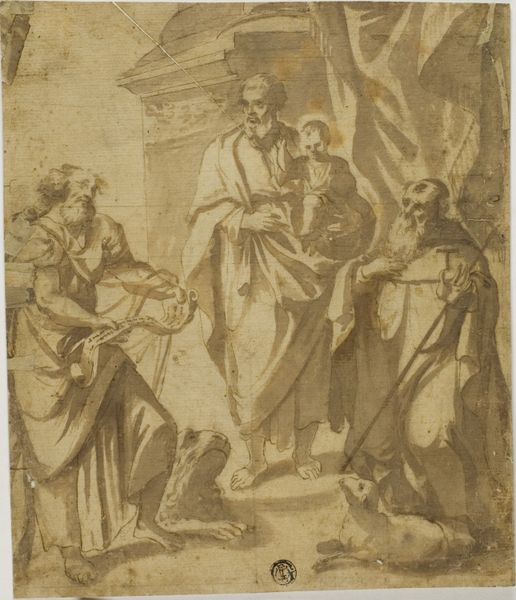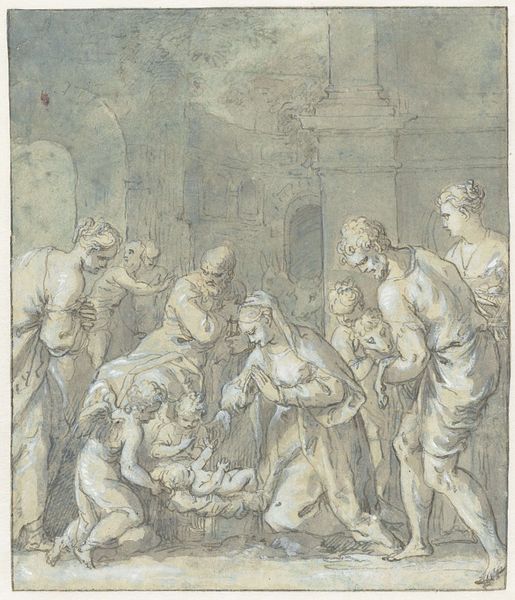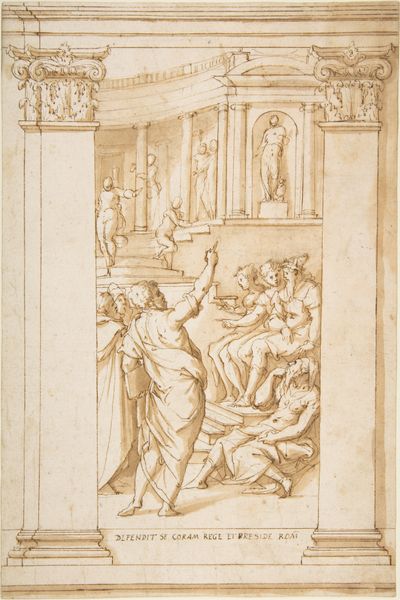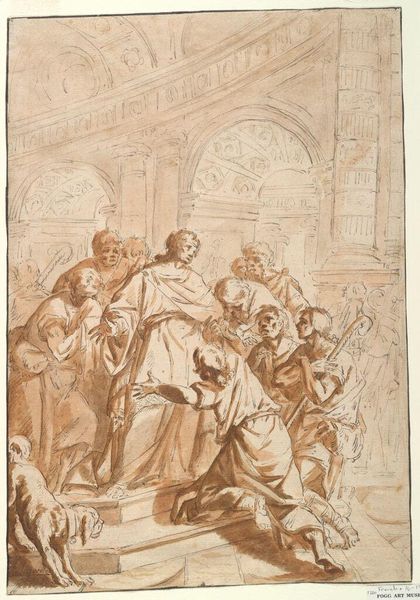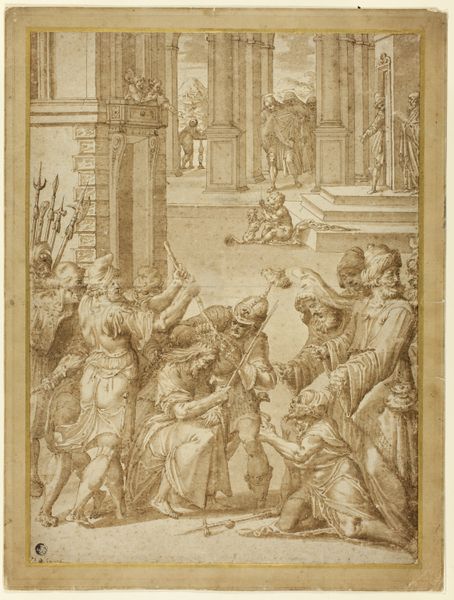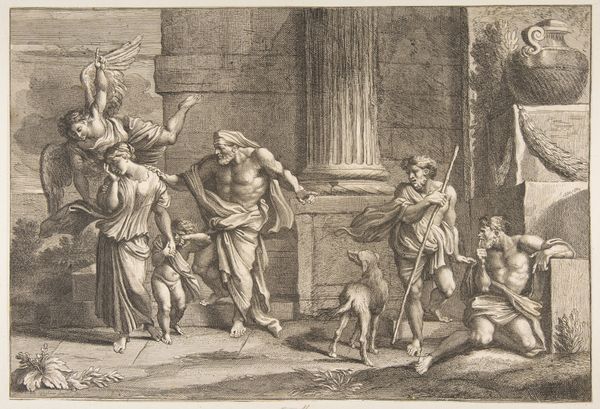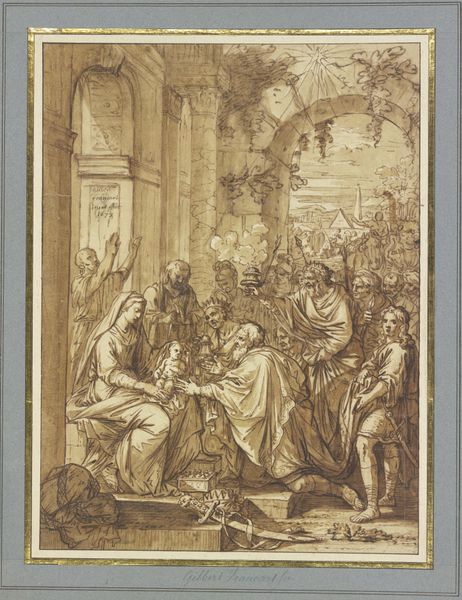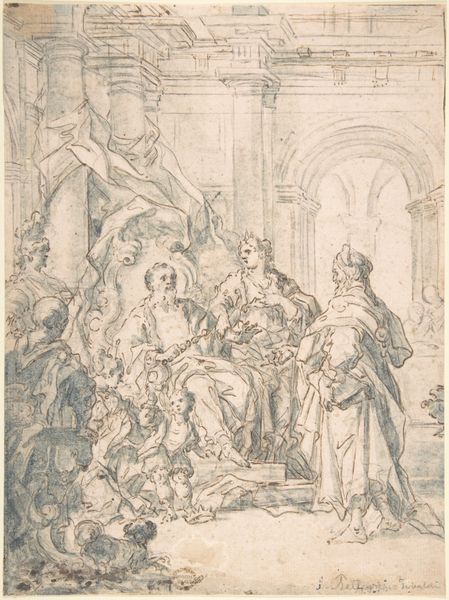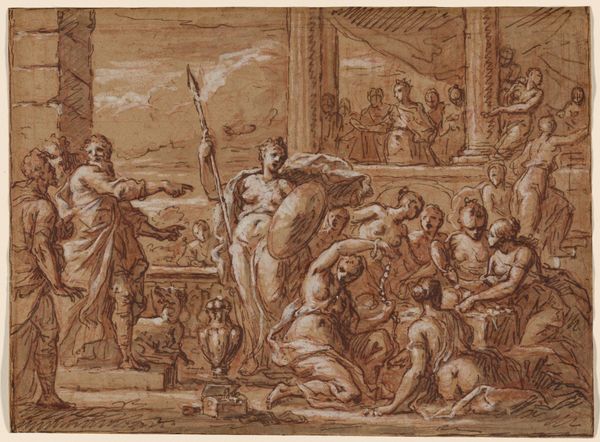
drawing, print, paper, chalk
#
drawing
#
narrative-art
# print
#
classical-realism
#
charcoal drawing
#
figuration
#
paper
#
chalk
#
history-painting
#
academic-art
Dimensions: 326 × 270 mm
Copyright: Public Domain
Curator: Looking at "The Death of Sapphira," an undated drawing by François Verdier, one is immediately struck by the overwhelming use of red chalk and the dramatic intensity of the scene. It’s a powerful composition rendered on paper. Editor: The scene feels overwhelmingly theatrical. Look at the way Verdier uses line—so energized! You almost feel the characters vibrating. There’s a frenetic quality that I can’t help but see reflected in a sort of madness around religious or moral certitude. Curator: Absolutely, and considering Verdier’s place within the academic tradition, it's worth considering the source material shaping his rendering. This depicts a scene from the Book of Acts, a rather gruesome tale of divine punishment. Editor: And how is that "gruesome tale" being presented in material terms? Look at the almost assembly-line manner by which people seem to be drawn – these very smooth lines and simplified anatomical details suggest an approach closer to printmaking where efficient labor management is important. There is an emphasis here in classical realism on conveying message effectively rather than on deep understanding about material processes that go into making something artistic. Curator: A fascinating connection, indeed. Although rendered using paper, chalk, and maybe a touch of charcoal, the emotional weight conveyed is colossal, no? Editor: Absolutely. If you look closely at Sapphira herself – her form almost dissolves within embrace against chaos around. That sense makes us consider – what is "making" in artistic creation when considering spiritual significance alongside human experience and fallibility at producing aesthetic things? Is divine inspiration, similar craftsmanship involved both materially during labor but through our belief in its value as creative? Curator: Those layers of materiality meeting faith bring such potent reflections, both for Verdier and now for us observing centuries later. Editor: I think thinking beyond artistic or craft processes towards these spiritual significances, brings this material analysis full circle when we reflect it is really ourselves who give these materials—charcoal, paper—the meaning behind "divine". Curator: Thank you for adding depth in your perspective to experiencing of artwork on material and spiritual levels today! Editor: Always great reflecting on pieces, hoping they make our audiences also go pondering the 'what', 'how' about making anything "sacred".
Comments
No comments
Be the first to comment and join the conversation on the ultimate creative platform.

